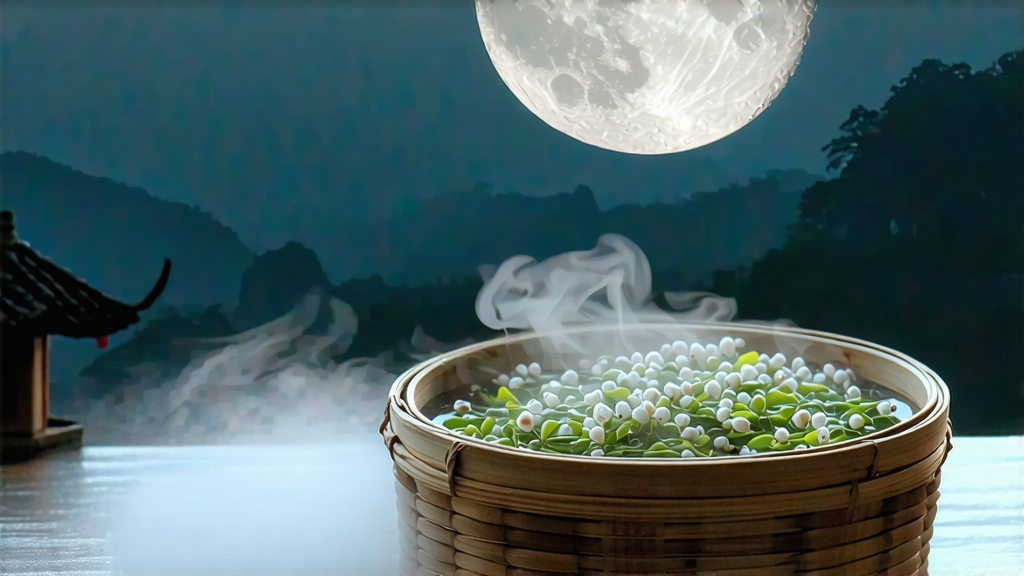
Among the six classical families of Chinese tea, white tea is the most whispered about: it is praised for its restraint, its refusal to be altered by fire or rolling, its willingness to let time speak instead of technique. Yet even within this quietest of categories there is a hidden star that most tea atlases still misplace. Travelers hunting for white tea usually stop in Fujian province, homeland of Bai Hao Yin Zhen (Silver Needle) and Bai Mu Dan (White Peony), but if you continue southwest, past the red-earth canyons of the Mekong and into the cloud forests of Yunnan, you will meet a tea that calls itself Yue Guang Bai—“Moonlight White”—a name that sounds like poetry and tastes like it too.
Yue Guang Bai is not an ancient imperial tribute; it is a youngster among teas, probably born in the late 1990s when Yunnan’s growers, sitting on mountains of Da Ye (“big leaf”) cultivar, asked themselves what else they could make besides pu-erh. Someone remembered the minimalist lore of white tea—merely pluck, wither, dry—and decided to see how the province’s sun-worshipping assamica bushes would answer to such gentle treatment. The experiment worked so well that within one decade Moonlight White had migrated from roadside curiosity to specialty-menu darling in Berlin, Melbourne and San Francisco. Its origin myth is short, but its botanical ancestry is long: the same towering, old-garden trees that give the world bold pu-erh and golden-tip dian hong now yield ivory-colored buds and two-tone leaves that look as if they have been dipped on one side in moonlight.
The visual signature is unforgettable. On the dry leaf the upper surface glows an iridescent charcoal-black, while the underside remains silvery down; when you pour hot water the colors reverse, the dark side blooming into soft jade, the pale side floating like a tiny paper boat. Locals say the contrast imitates the way Yunnan’s full moon lights the mountain: one slope in shadow, one in magnesium brilliance. Whatever the truth, the name stuck.
Plucking follows a strict lunar calendar. Gardens above sixteen hundred metres begin picking around the third week of March, always before sunrise, when dew is still thick and the tea bushes breathe out the night’s accumulation of lilac and wild honey aromatics. Only one bud plus the adjacent half-open leaf is taken; anything larger is considered too coarse for the subtle style. Because the assamica leaf is twice the size of Fujian’s small-leaf variety, a kilogram of finished Moonlight White can require more than fourteen thousand plucks, all done by thumbnail to avoid the bruise that scissors can cause.
Withering is where Yunnan parts company with Fujian. Instead of indoor bamboo racks in breezy courtyards, the leaves are spread one layer deep on raised mesh trays inside a greenhouse whose walls can be rolled up or down like sails. For thirty-six to forty-eight hours the tea is left under high-altitude sun by day and mountain chill by night, a diurnal swing that can exceed fifteen degrees Celsius. Growers call this “sun-withering with moon bathing,” a romantic phrase for a precise protocol: the leaf must lose about ninety percent of its moisture before any mechanical intervention, yet enzymatic browning has to be arrested just before it tips into red-tea territory. Achieving this requires reading the sky; if clouds thicken, trays are wheeled indoors and warm air blowers set to thirty-two degrees Celsius, mimicking the sun’s infrared spectrum. When done correctly the leaf ends up supple as kid skin, smelling of dried apricot and wet slate.
Drying is equally gentle. No baking, no charcoal embers; instead, the tea is stacked no deeper than four centimetres on hemp cloth and exposed to a forty-degree airflow for six hours. The temperature is kept below the human body so that the large leaf’s core enzymes—polyphenol oxidase and peroxidase—remain partly viable. This residual activity is the secret behind Moonlight White’s legendary aging potential: like pu-erh it will darken and deepen, but instead of earthy bass notes it develops rum-like sweetness and the scent of cured vanilla pod.
Because the leaf is fluffy and low-density, five grams can fill an entire two-hundred-millilitre gaiwan. Beginners often underleaf; to avoid watery cups